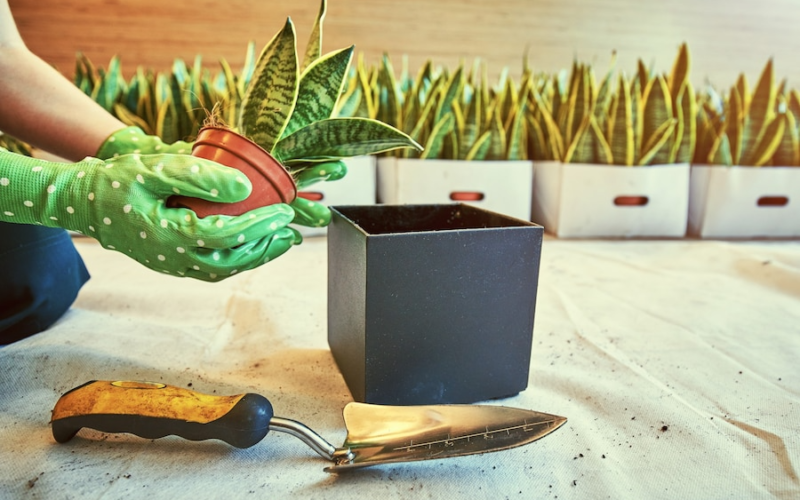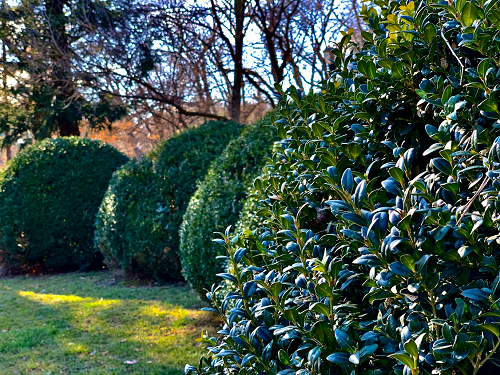
Hey there, plant buddies! Picking the right pot for your leafy pals ain’t just about the style.
It’s kinda like walking a tightrope—you gotta think about what your plants need, how much time you can spend on them, and, sure, what you think looks neat.
From the old-school cool of terracotta to the smooth vibes of modern plastics and all that’s in-between, there’s heaps of choices.
But no worries; we’re here to help you figure it out.
Whether you’re a pro with plants or just getting your feet wet, we’ve got the scoop on the best pot materials to make sure your green mates do well.
Types of Materials Used in Pots and Planters
Talking pots and planters, the stuff they’re made from is just as key as their looks. Let’s check out some fave picks:
Terracotta: The classic choice, terracotta’s got that earthy vibe. It’s kinda like a sponge, good for plants that don’t like soggy roots, letting soil air out and water dry up. But, it might crack when it gets cold, so maybe skip it for the plants that chill in the frost.
- Plastic: Light and handy, plastic pots are a hit with lots of folks. They keep the water in, which is great for plants that love a drink. They’re also all over the place in colors and shapes. The downside? They can feel a bit cheap and don’t always last looking nice.
- Ceramic: These pots are lookers with their shiny finishes and bright colors. Ceramic’s less hole-y than terracotta, holding moisture longer. Just remember they’re heavy and might crack if you drop them.
- Metal: If you’re after that cool, industrial style, metal pots are the way to go. Tough and trendy, they fit right in with a modern vibe. But be careful – they heat up in the sun, which isn’t great for every plant.
- Wood: For that natural touch, you can’t beat wood. It’s strong and helps keep roots at the right temperature, cooler in the hot months and warmer when it’s cold. But, wood can rot after a while, especially if it’s always wet or not treated.
- Concrete: Looking for something bold? Concrete pots make a statement. They’re heavy and tough, awesome for big plants. The catch? They’re super heavy, so they’re not the best if you like moving things around.
Picking the right material for your pots isn’t just about the look; it’s about giving your plants the best spot to grow.
Whether you’re into the natural feel of wood or the shiny style of ceramic, there’s a material out there that’s just right for your green haven.
Pros and Cons of Each Material
Terracotta—good and bad bits
Terracotta lets the soil breath real good cause it’s full of tiny holes. This cuts down on too much water sitting around.
It’s got this old-school look that gets even cooler as it gets older, making your garden look awesome.
It breaks easy. Drop it or let it freeze, and you’re gonna be cleaning up bits of it.
Since it’s so holey, water zips out fast, meaning you might have to water your plants more when it’s hot.
Plastic—the ups and downs
Plastic’s super light, so moving big pots around is a breeze.
Keeps dirt wet for ages, so you don’t have to water as much.
The sun can make it crack and look old.
It’s not too kind to the planet unless you pick the recycled stuff.
Ceramic—what’s good and what’s not
Ceramic pots come in tons of styles and colors, so they’re great for sprucing up the place.
They hold onto water well, which means the soil stays damp.
They’re heavy and easy to break, not ideal if you’re always changing things up or a bit clumsy.
Might cost you more, especially for the fancy ones.
Metal—pros and cons
Metal’s tough. It can take a hit and still look spot on.
Got loads of looks, from old-school iron to shiny steel, so it fits any garden style.
Metal gets hot fast, which might cook your plant’s roots on sunny days.
Some metal types get rusty, which you might like, or not.
Wood—the good and the iffy
Wood keeps roots safe from big temp changes since it’s a natural jacket.
Fits right in outside, making your garden look even more natural.
Needs the right treatment, or it’ll rot or get bug bites.
Usually heavy and needs some looking after to keep it looking good.
Concrete—strong points and drawbacks
Concrete is mega tough, perfect for big plants or trees.
Gives off a cool, simple vibe that can really make a space look grounded.
Super heavy, so think of it as more of a stay-put kind of pot.
Might cost a bit and needs something solid underneath cause it’s so heavy.
Each material’s got its own pluses and minuses, so picking depends on what’s best for your garden’s look, the weather, and how your plants like to live.
Factors to Consider When Choosing Pots and Planters
Choosing the right pot ain’t just about looking good with your gardening gear. Here are some things to think about before picking one:
- What the Plant Wants: Some plants dig the sunshine, while others are more about the chill life. Pick a pot that fits what your plant likes, especially when it comes to how wet or dry it wants to be.
- Where’s It Gonna Sit: Gonna put your planter in a spot that gets tons of sun or somewhere shadier? Some materials are better in the heat, and others are cool staying cool.
- Plan to Move It?: If you like changing things up a lot, stick to lighter stuff like plastic or some metals. If you pick something like concrete or big ceramic pots, you’re in for a heavy lift.
- Look and Feel: Your pot’s also a bit of decor, so think about the look you’re going for. Rustic, sleek, wild? The material you pick can really set the mood.
- How Long You Want It For: Think about if you’re okay with swapping pots out now and then. Some materials get better with age, but others might need to be replaced sooner.
Keep these bits in mind, and you’ll find pots and planters that aren’t just pretty but also make your plants happy and healthy.
Maintenance Tips for Pots and Planters
Keeping your pots looking sharp doesn’t have to be a hassle. Here are some straightforward tricks to make sure they stay looking good:
- Make Sure They Drain: It’s crucial your pots have holes at the bottom to stop soil from getting soggy. If your pot’s missing holes, chucking some gravel at the bottom can sort out the extra water.
- Wash Them Well: When each season wraps up, give your pots a thorough wash to get rid of any dirt or muck. For terracotta and ceramic, mixing a little vinegar in the water can help get rid of any salty spots.
- Watch the Weather: Got pots that can’t stand the cold, like terracotta or ceramic? You might wanna move them inside or to a covered area when winter hits.
- Swap Out the Soil: Chuck in new soil every once in a while, about every year or so. It keeps the nutrient levels good and gives your plants a bit of a pep up.
- Look Out for Bugs: Keep an eye out for pests that might be lurking in the drainage holes or under the edges. A quick clean can stop them from crashing your plant party.
Pretty easy, yeah? A bit of care can keep your pots and planters looking top-notch and your plants happy.
Conclusion
So, that’s the lowdown on finding the perfect pots and planters for your green friends.
From the airy feel of terracotta to the tough-n-ready vibe of concrete, there’s a pot out there for every plant and any style.
Keep in mind, the best pot does more than just fit your plant’s needs—it also throws a bit of you into the mix.
Pick your favorite, remember the upkeep tricks, and gear up to see your garden bloom. Happy planting, and here’s to hoping your garden turns out as wild and full of life as a jungle!





